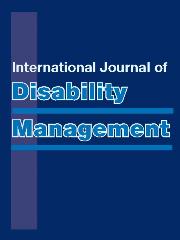Article contents
Disability Management: Key Concepts and Techniques for an Aging Workforce
Published online by Cambridge University Press: 23 February 2012
Abstract
The aging workforce is likely to result in increasing numbers of workers with disabilities. The US Census Bureau projects that the 45- to 54- and 55- to 64-year-old population in the United States will grow by nearly 44.2 million (17%) and 35 million (39%) in the next 10 years (US Census Bureau, 2004). By the year 2010, this group will account for nearly half (44%) of the working age population (20–64), and the number of people with disabilities between the ages of 50 and 65 will almost double (Weathers, 2006). Disability management and accommodation policies and practices readily lend themselves to addressing the challenges employers will face with an aging workforce, and the increasing prevalence of disability that these demographics bring. Proactive education about ways to maximise the productivity of an aging workforce, effective case management, and workplace accommodation can significantly contribute to maximising aging worker retention.
- Type
- Articles
- Information
- Copyright
- Copyright © Cambridge University Press 2006
- 6
- Cited by


